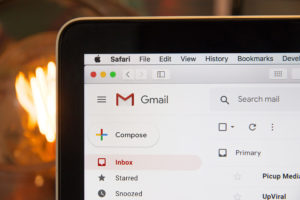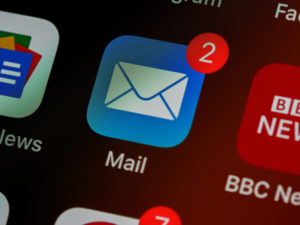The Do’s and Don’ts of Email Marketing: Your Ultimate Guide
The Do’s and Don’ts of Email Marketing: Your Ultimate Guide
DO THIS
1. Personalize Messages
Customers in today’s world have come to expect content that is relevant and personalized. Adding your customer’s name to the email subject line is a good start to this personalization effort. However, if you want to go even a step further, you can change the content of your email based on each individual subscriber and their gender, location, or other things you might know about them. Personalized messages have been known to see an increase in open rates. In fact, studies have shown that emails with personalized subject lines are 26% more likely to be opened than those without.
2. Provide Great, Memorable Content
As briefly mentioned above, customers want content that they can relate to. First, you want to make sure the message in your email newsletter is clear. Second, you want to make sure it’s catchy.
Emails that are too long, with too much text, tend to lose the interest of customers faster than if the content was short, sweet, and to the point. The more relevant and interesting your content is, the more likely it’ll be shared, and the more your name and brand will reach potential customers outside your database.
3. Make Your Subject Line Stand Out
While the content within your email is great, you can’t forget about the subject line. Your subject line is the first impression area. It’s the one chance you have to catch your customers’ attention. Your goal is to get people to want to open your email in the first place, right? Well, then these are the things you should focus on to gain the interest of your readers from the start:
- Creating a sense of urgency
- Piquing your customer’s curiosity
- Including an offer
- Personalizing with name
- Being relevant and timely with your messaging
As a business, you want to create a subject line that’s interested enough to get people to clickthrough. About 47% of marketers say they test different email subject lines to optimize their email’s performance. This is a great idea to ensure your subject line really stands out amongst the others.
4. Include A Call-to-Action
A call-to-action is one of the most important components to creating a solid email marketing campaign and should be the most prominent thing in your emails. This is what grabs a subscriber’s attention and encourages them to act. First, you should think about what your goal of an email campaign is and what action you want your customer’s to take. Is your goal to increase business? Generate more leads and sales? Increase brand awareness? Whatever the goal may be, a call-to-action is essential because it helps guide your customer’s to the primary action you want them to take. You should add a CTA on your email in the form of a button, an image, or something else that subscribers can click. A good CTA will stand out. But more than that, it’ll highlight the value of what happens beyond the click. When creating email newsletter, make sure you always add a CTA. No matter what, your goal should be to get your subscribers to act.
5. Include Contact Information
A clean, well-thought-out email will include contact information. A lot of businesses put the information at the bottom. You can also include a contact form, or a link to the contact us page. Regardless, it should be easy for a subscriber to contact you if they need to. Make it obvious where that information is located. You should include your physical address (especially if this is a location that your customer’s can physically visit), your phone number, and your email address.
6. Email Regularly
According to Campaign Monitor, from a study of 1,000 small business owners, email marketing was ranked as the second most effective medium for building brand awareness. Businesses do this by emailing regularly – but not too much. A good approach is to send emails once or twice a month to start. If you notice a good return, and customers are consistently opening and engaging with your content, then you may even be able to send weekly emails. Weekly emails can be good if you have offers or regular promotions that you need to inform your customers about.
DON’T DO THAT
1. Send Emails Too Frequently
Even though we suggest you send emails regularly, too much of a good thing can be a bad thing. You don’t want to send emails too frequently and come off as looking like annoying spam. How many of you get emails from the same company multiple times a week? How many of you have unsubscribed from those emails, or have just stopped opening them? The amount of emails you should be sending isn’t always straightforward. In fact, it depends on a variety of factors, including: what industry you’re in, what your customer’s prefer, and what your emails are all about. The last thing you want to do is send emails just for the sake of sending emails. Sending too many emails, too fast, and without the proper content and messaging, can send your customer’s straight to that unsubscribe link. No one wants that!
2. Hide The Unsubscribe Link
 Speaking of unsubscribing… you never want to hide the unsubscribe link! While no company wants people to unsubscribe from their emails, there has to be a clear exit path for your customers. By hiding the unsubscribe link, or just making it difficult for people to leave if they want to, you’re creating a terrible user experience and risking a damaged reputation. While it may hurt a little to see people leaving your list, in all reality, you only want people on your list who want to be there. For example, maybe you had a customer move away and they want to unsubscribe since they can no longer use your products or services. That person doesn’t add any value to your email, and probably wouldn’t open your email because it’s no longer relevant to them. This can impact that clickthrough rate and open rate. The last thing you need, nonetheless, is a damaged reputation over this.
Speaking of unsubscribing… you never want to hide the unsubscribe link! While no company wants people to unsubscribe from their emails, there has to be a clear exit path for your customers. By hiding the unsubscribe link, or just making it difficult for people to leave if they want to, you’re creating a terrible user experience and risking a damaged reputation. While it may hurt a little to see people leaving your list, in all reality, you only want people on your list who want to be there. For example, maybe you had a customer move away and they want to unsubscribe since they can no longer use your products or services. That person doesn’t add any value to your email, and probably wouldn’t open your email because it’s no longer relevant to them. This can impact that clickthrough rate and open rate. The last thing you need, nonetheless, is a damaged reputation over this.
3. Over-Use Capitals and Exclamation Points
Overusing capitals and exclamation points can actually shift your subscriber’s focus away from the message of your email and towards the tone you’re using. Not only that, but it can make your email harder to read and understand. Using ALL CAPS can make your audience feel like you’re yelling at them. Exclamation points can make you appear overly enthusiastic or even insincere!!!!! It’s good email etiquette to refrain from using all caps entirely, and limit yourself to one exclamation point in your emails!
4. Send Emails Without Testing Them First
You may be happy with how your template looks when you’re creating the email newsletter. However, it may look far different on a mobile device, in an email, or on a certain browser. To make sure your email is displaying correctly, you should test it first. Send it to yourself before sending to customers. Make sure when you do this, you’re looking at it on multiple screens: your desktop and your mobile device. Not only that, but make sure you’re viewing it on multiple browsers to ensure it looks the same on each one.



